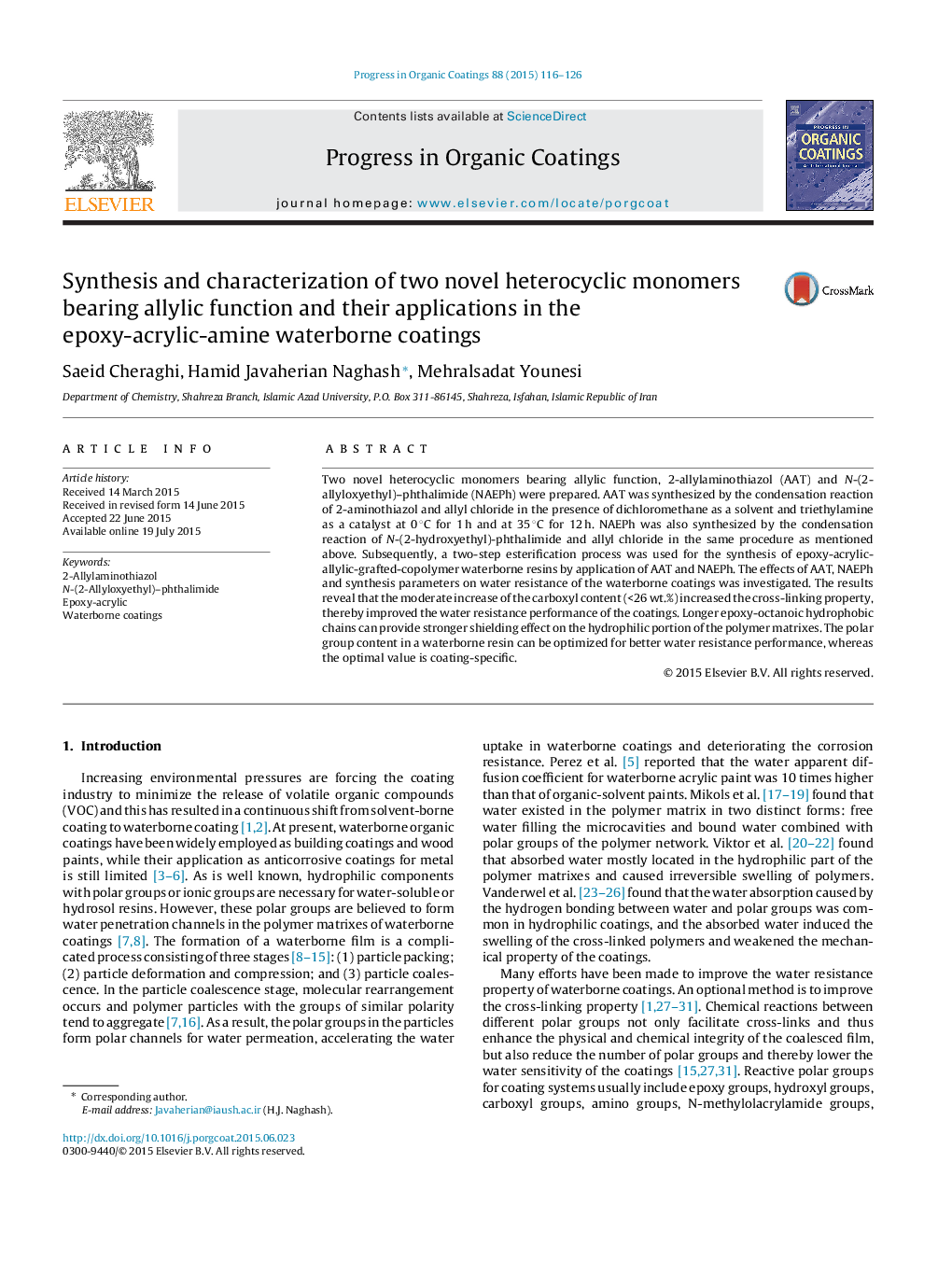| کد مقاله | کد نشریه | سال انتشار | مقاله انگلیسی | نسخه تمام متن |
|---|---|---|---|---|
| 692312 | 1460515 | 2015 | 11 صفحه PDF | دانلود رایگان |
• “AAT” and “NAEPh” were successfully synthesized.
• Increasd viscosity at high molecular weight (>8000 Da) lead to poor paintability.
• The increase in the resin molecular weights cause enhancing the water resistance.
• Excess carboxyl groups cause significant increase in water permeation.
• Excess carboxyl groups cause faster decrease of mechanical properties.
Two novel heterocyclic monomers bearing allylic function, 2-allylaminothiazol (AAT) and N-(2-allyloxyethyl)–phthalimide (NAEPh) were prepared. AAT was synthesized by the condensation reaction of 2-aminothiazol and allyl chloride in the presence of dichloromethane as a solvent and triethylamine as a catalyst at 0 °C for 1 h and at 35 °C for 12 h. NAEPh was also synthesized by the condensation reaction of N-(2-hydroxyethyl)-phthalimide and allyl chloride in the same procedure as mentioned above. Subsequently, a two-step esterification process was used for the synthesis of epoxy-acrylic-allylic-grafted-copolymer waterborne resins by application of AAT and NAEPh. The effects of AAT, NAEPh and synthesis parameters on water resistance of the waterborne coatings was investigated. The results reveal that the moderate increase of the carboxyl content (<26 wt.%) increased the cross-linking property, thereby improved the water resistance performance of the coatings. Longer epoxy-octanoic hydrophobic chains can provide stronger shielding effect on the hydrophilic portion of the polymer matrixes. The polar group content in a waterborne resin can be optimized for better water resistance performance, whereas the optimal value is coating-specific.
Figure optionsDownload as PowerPoint slide
Journal: Progress in Organic Coatings - Volume 88, November 2015, Pages 116–126
